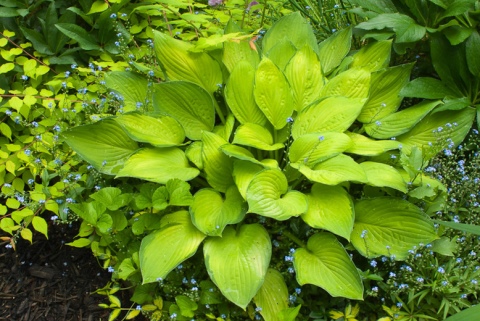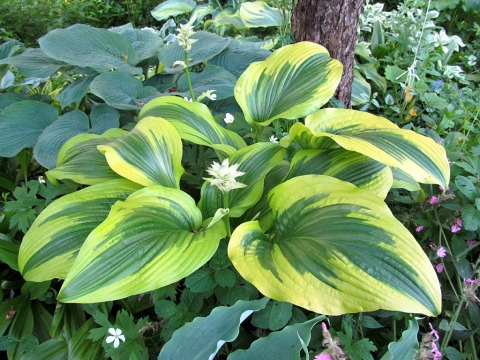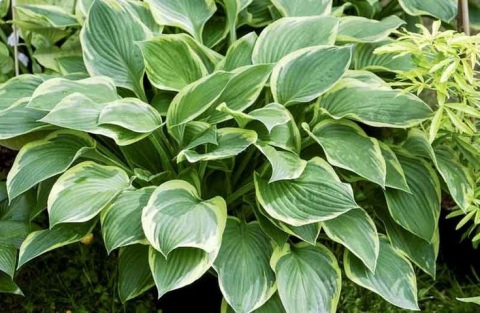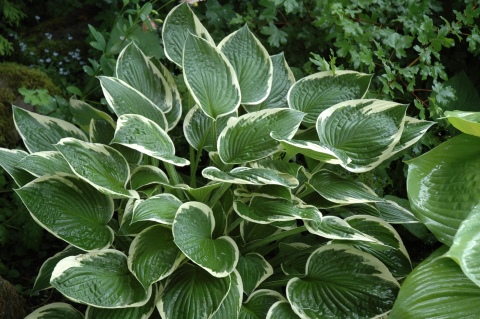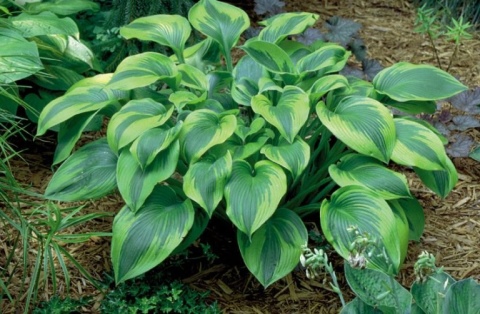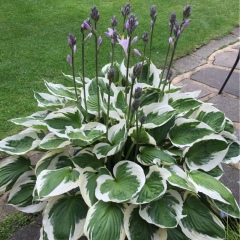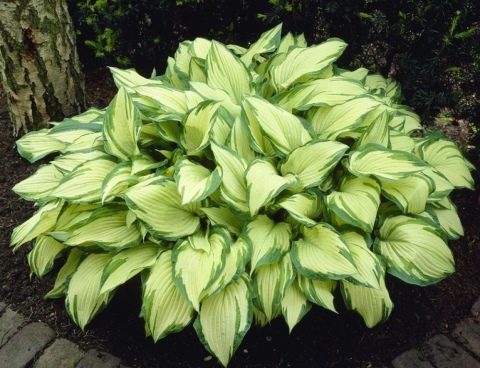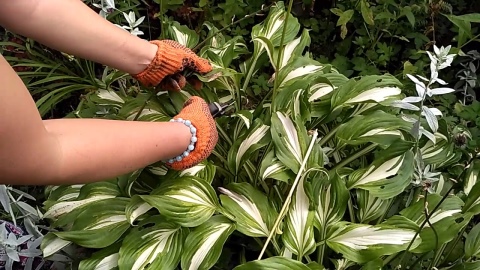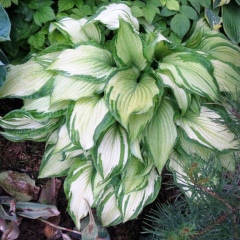Description of the variety
The ornamental cultivar Fortunei Albopicta belongs to the Asparagus family of the "Fortune" species. The perennial plant develops and grows rapidly, is frost-resistant - it can withstand extremely low temperatures down to -40 degrees. The botanical characteristics are as follows.
- In breadth, the shrub is capable of growing up to 80-100 cm, its height is from 40 to 70 cm, these parameters depend on the created conditions and proper care.
- The leaves of the plant are 20 cm long and have the ability to change color. At the beginning of the growing season, they are yellow-green with a dark frame around the edges, by August they acquire a more uniform, pale green appearance. The yellowish tint lasts longer on the bushes if they are shaded, or if the summer is cold.
- The crown of the hosta is dense and dense, foliage with wavy or straight edges, sometimes a wax coating is visible on it.
- Flowers, collected in inflorescences in the form of bells and funnels, can be white, blue, light lilac, appear in mid-summer. Later, bolls are formed on them, filled with dark flat seeds.
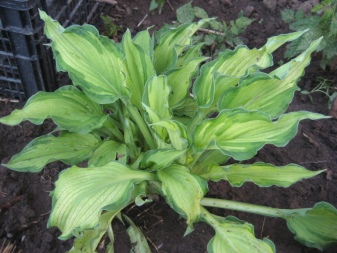
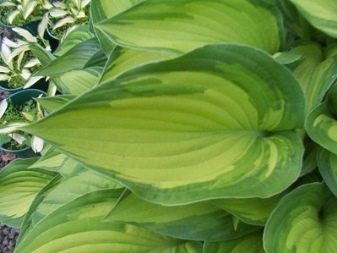
The completely beautiful appearance of the plant is formed by the age of 4-5 years - the shrub becomes lush with a pronounced color of foliage. The hybrid hosta successfully grows and blooms both in partial shade and in open spaces, however, plants planted in the shade have a more intense, bright color, which is so necessary for an ornamental variety.
Hosta "Albopikta" is a successful combination of unpretentiousness and maximum attractiveness of the decorative look. It can be combined with any flowering crops, coniferous and deciduous trees and shrubs. In landscape design, the plant is successfully used to decorate borders, garden paths and paths; it is planted in groups and separately near artificially created reservoirs, in flower beds, rocky gardens and on alpine hills.
How to plant correctly?
To grow successfully, the hosta needs to know what kind of soil it prefers. Heavy soils with a predominantly clay content are not suitable for the plant; too dry soil, most of which is sand, is undesirable. The ideal option is loamy, fertile soil with a high concentration of humus. It is better to plant the culture in partial shade, so that the shrub can equally receive light and be protected from it at midday. An additional condition is the absence of drafts and protection from strong gusts of wind. In this regard, bushes are planted next to plantings of other plants with a dense crown, or near buildings, fences that can protect them from the wind.
You can plant cuttings or cuttings prepared by yourself, or use purchased planting material. As a rule, such seedlings with buds and reliably hidden roots are sold in containers or plastic bags with wood chips and peat.
Planting is a responsible process, on the knowledge of the intricacies of which the quick adaptation of the variety to new conditions depends.
- Planting holes are dug to a depth of 25 cm; in general, it is better to focus on the size of the earthen coma with the root system. The main thing is that the fossa is spacious, and there is space for the roots to grow in breadth.
- At the bottom of the pit, fertile soil is placed with the addition of ammonium and potassium nitrate, "Superphosphate" 15-20 g each. If the ground is heavy, you will need a drainage device made of gravel, pebbles or pieces of brick.
- When planting several plants, intervals of 40-50 cm are left between them.
- The seedling is placed in the center of the hole and carefully covered with a nutritious substrate, watered, then the trunk circle is slightly tamped, and mulched with dry leaves, peat and pine bark.

